Tianpei Xie
TabDeco: A Comprehensive Contrastive Framework for Decoupled Representations in Tabular Data
Nov 17, 2024



Abstract:Representation learning is a fundamental aspect of modern artificial intelligence, driving substantial improvements across diverse applications. While selfsupervised contrastive learning has led to significant advancements in fields like computer vision and natural language processing, its adaptation to tabular data presents unique challenges. Traditional approaches often prioritize optimizing model architecture and loss functions but may overlook the crucial task of constructing meaningful positive and negative sample pairs from various perspectives like feature interactions, instance-level patterns and batch-specific contexts. To address these challenges, we introduce TabDeco, a novel method that leverages attention-based encoding strategies across both rows and columns and employs contrastive learning framework to effectively disentangle feature representations at multiple levels, including features, instances and data batches. With the innovative feature decoupling hierarchies, TabDeco consistently surpasses existing deep learning methods and leading gradient boosting algorithms, including XG-Boost, CatBoost, and LightGBM, across various benchmark tasks, underscoring its effectiveness in advancing tabular data representation learning.
SwitchTab: Switched Autoencoders Are Effective Tabular Learners
Jan 04, 2024Abstract:Self-supervised representation learning methods have achieved significant success in computer vision and natural language processing, where data samples exhibit explicit spatial or semantic dependencies. However, applying these methods to tabular data is challenging due to the less pronounced dependencies among data samples. In this paper, we address this limitation by introducing SwitchTab, a novel self-supervised method specifically designed to capture latent dependencies in tabular data. SwitchTab leverages an asymmetric encoder-decoder framework to decouple mutual and salient features among data pairs, resulting in more representative embeddings. These embeddings, in turn, contribute to better decision boundaries and lead to improved results in downstream tasks. To validate the effectiveness of SwitchTab, we conduct extensive experiments across various domains involving tabular data. The results showcase superior performance in end-to-end prediction tasks with fine-tuning. Moreover, we demonstrate that pre-trained salient embeddings can be utilized as plug-and-play features to enhance the performance of various traditional classification methods (e.g., Logistic Regression, XGBoost, etc.). Lastly, we highlight the capability of SwitchTab to create explainable representations through visualization of decoupled mutual and salient features in the latent space.
Semiblind subgraph reconstruction in Gaussian graphical models
Nov 15, 2017
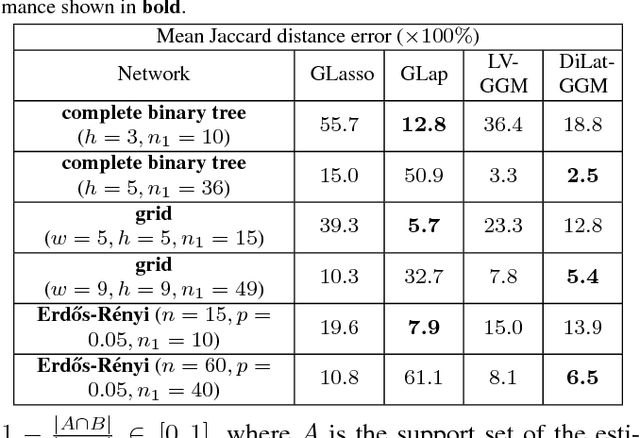

Abstract:Consider a social network where only a few nodes (agents) have meaningful interactions in the sense that the conditional dependency graph over node attribute variables (behaviors) is sparse. A company that can only observe the interactions between its own customers will generally not be able to accurately estimate its customers' dependency subgraph: it is blinded to any external interactions of its customers and this blindness creates false edges in its subgraph. In this paper we address the semiblind scenario where the company has access to a noisy summary of the complementary subgraph connecting external agents, e.g., provided by a consolidator. The proposed framework applies to other applications as well, including field estimation from a network of awake and sleeping sensors and privacy-constrained information sharing over social subnetworks. We propose a penalized likelihood approach in the context of a graph signal obeying a Gaussian graphical models (GGM). We use a convex-concave iterative optimization algorithm to maximize the penalized likelihood.
Robust training on approximated minimal-entropy set
Oct 21, 2016



Abstract:In this paper, we propose a general framework to learn a robust large-margin binary classifier when corrupt measurements, called anomalies, caused by sensor failure might be present in the training set. The goal is to minimize the generalization error of the classifier on non-corrupted measurements while controlling the false alarm rate associated with anomalous samples. By incorporating a non-parametric regularizer based on an empirical entropy estimator, we propose a Geometric-Entropy-Minimization regularized Maximum Entropy Discrimination (GEM-MED) method to learn to classify and detect anomalies in a joint manner. We demonstrate using simulated data and a real multimodal data set. Our GEM-MED method can yield improved performance over previous robust classification methods in terms of both classification accuracy and anomaly detection rate.
Learning to classify with possible sensor failures
Feb 22, 2016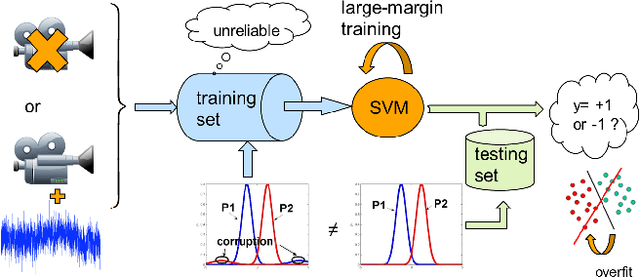
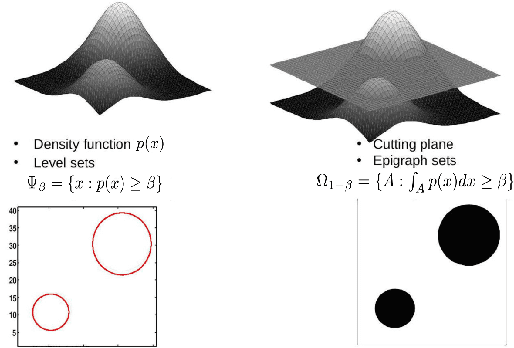
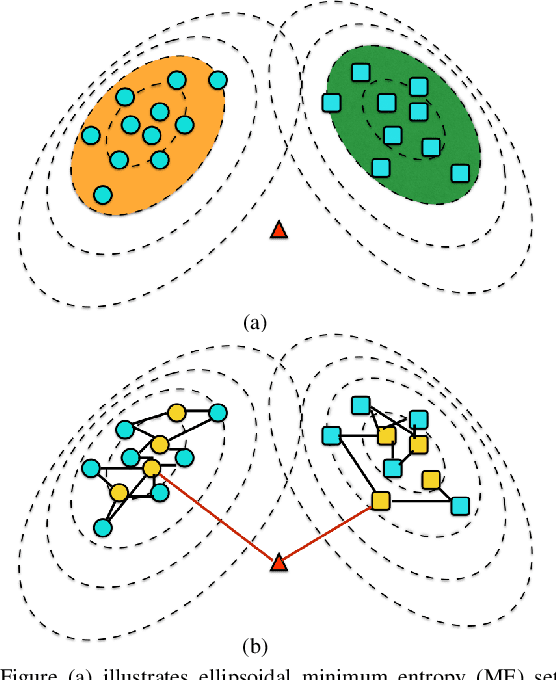
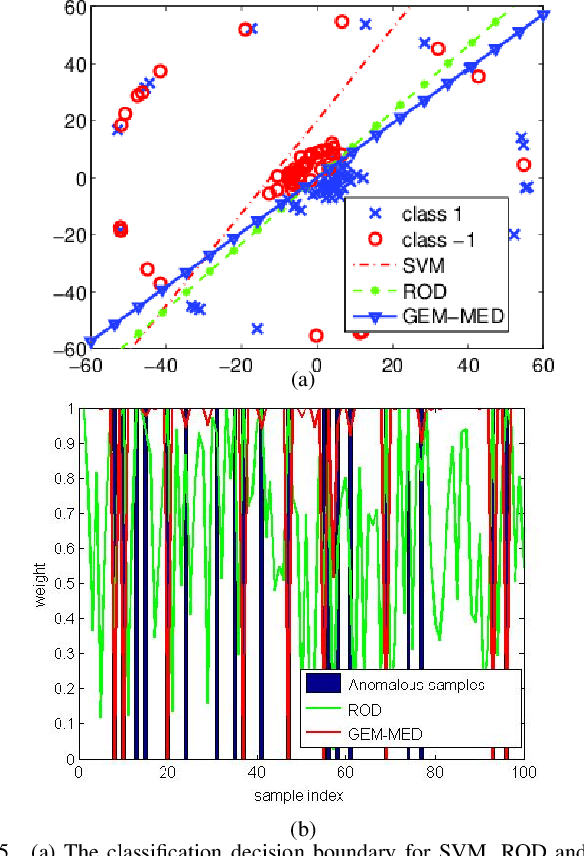
Abstract:In this paper, we propose a general framework to learn a robust large-margin binary classifier when corrupt measurements, called anomalies, caused by sensor failure might be present in the training set. The goal is to minimize the generalization error of the classifier on non-corrupted measurements while controlling the false alarm rate associated with anomalous samples. By incorporating a non-parametric regularizer based on an empirical entropy estimator, we propose a Geometric-Entropy-Minimization regularized Maximum Entropy Discrimination (GEM-MED) method to learn to classify and detect anomalies in a joint manner. We demonstrate using simulated data and a real multimodal data set. Our GEM-MED method can yield improved performance over previous robust classification methods in terms of both classification accuracy and anomaly detection rate.
Semi-supervised Multi-sensor Classification via Consensus-based Multi-View Maximum Entropy Discrimination
Jul 05, 2015


Abstract:In this paper, we consider multi-sensor classification when there is a large number of unlabeled samples. The problem is formulated under the multi-view learning framework and a Consensus-based Multi-View Maximum Entropy Discrimination (CMV-MED) algorithm is proposed. By iteratively maximizing the stochastic agreement between multiple classifiers on the unlabeled dataset, the algorithm simultaneously learns multiple high accuracy classifiers. We demonstrate that our proposed method can yield improved performance over previous multi-view learning approaches by comparing performance on three real multi-sensor data sets.
 Add to Chrome
Add to Chrome Add to Firefox
Add to Firefox Add to Edge
Add to Edge